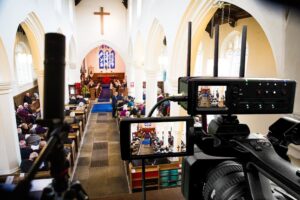
If you’re in the market for a Fiber to Ethernet converter, you may be wondering exactly what they are and what they do. This blog post will explore everything you need to know about fiber to Ethernet converters, from how they work to their benefits. So, what exactly is a fiber to Ethernet converter? Keep reading to find out.
What is an Fiber to Ethernet Converter?
Fiber to Ethernet converters are devices that allow you to connect a fiber optic cable to an Ethernet network. They are commonly used in situations where you need to extend the reach of your Ethernet network or connect two different types of networks together.
Fiber to Ethernet converters typically have one or two ports. The first port is used to connect to the fiber optic cable, and the second port is used to connect to the Ethernet network. The converter will then convert the signals from the fiber optic cable into signals that can be read by the Ethernet network.
Fiber to Ethernet converters can be used with both single-mode and multi-mode fiber optic cables. Single-mode cables are typically used for long distance applications, while multi-mode cables are typically used for shorter distances.
The speed of your connection will be determined by the type of fiber optic cable that you are using as well as the speed of your Ethernet network. Fiber to Ethernet converters can support speeds up to 10 Gbps.
What are the Benefits of Using a Fiber to Ethernet Converter?
There are many benefits of using a fiber to Ethernet converter. Perhaps the most obvious benefit is the increased speed that you will experience when using one. If you have ever been on a slow internet connection, you know how frustrating it can be. With a converter, you can expect much faster speeds, which is great for work or play.
Another big benefit is that these converters are very reliable. When you’re depending on your internet connection for business or pleasure, you need to know that it won’t let you down. Fiber optic cables are much less likely to experience problems than other types of cables, so you can count on your connection being there when you need it.
Finally, fiber to Ethernet converters can save you money in the long run. While the initial investment might be higher than other options, the long-term savings are significant. Fiber optic cables last longer and require less maintenance than other types of cables, so you won’t have to replace them as often. In addition, they often come with warranties or guarantees, so if something does go wrong, you’ll be covered.
How to Choose the Right Fiber to Ethernet Converter
If you’re looking to convert your Ethernet connection to a fiber optic one, you’ll need a fiber to Ethernet converter. But with so many on the market, how do you know which one is right for you?
Here are a few things to consider when choosing a fiber to Ethernet converter:
– Speed: How fast do you need your connection to be? Fiber optic connections are much faster than Ethernet, so if speed is a priority for you, make sure to choose a converter that can handle the speeds you need.
– Compatibility: Not all converters are compatible with all types of equipment. Make sure to check that the converter you’re considering is compatible with your specific equipment.
– Features: Some converters come with additional features like port forwarding and Quality of Service (QoS). If you need these features, make sure to choose a converter that offers them.
– Budget: Converters can range in price from around $100 to $1000 or more. Decide how much you’re willing to spend on a converter and then narrow down your options based on that budget.
Conclusion
Fiber to Ethernet converters are a great way to connect your fiber optic cable to an Ethernet network. They provide a simple, convenient, and cost-effective solution for connecting your fiber optic cable to an Ethernet network. If you’re looking for a way to connect your fiber optic cable to an Ethernet network, then a fiber to Ethernet converter is definitely worth considering.


